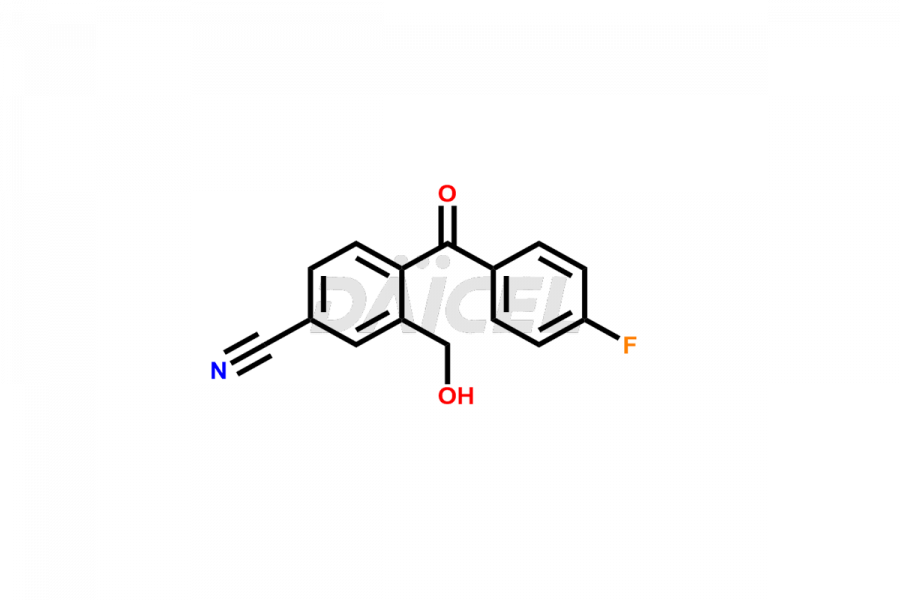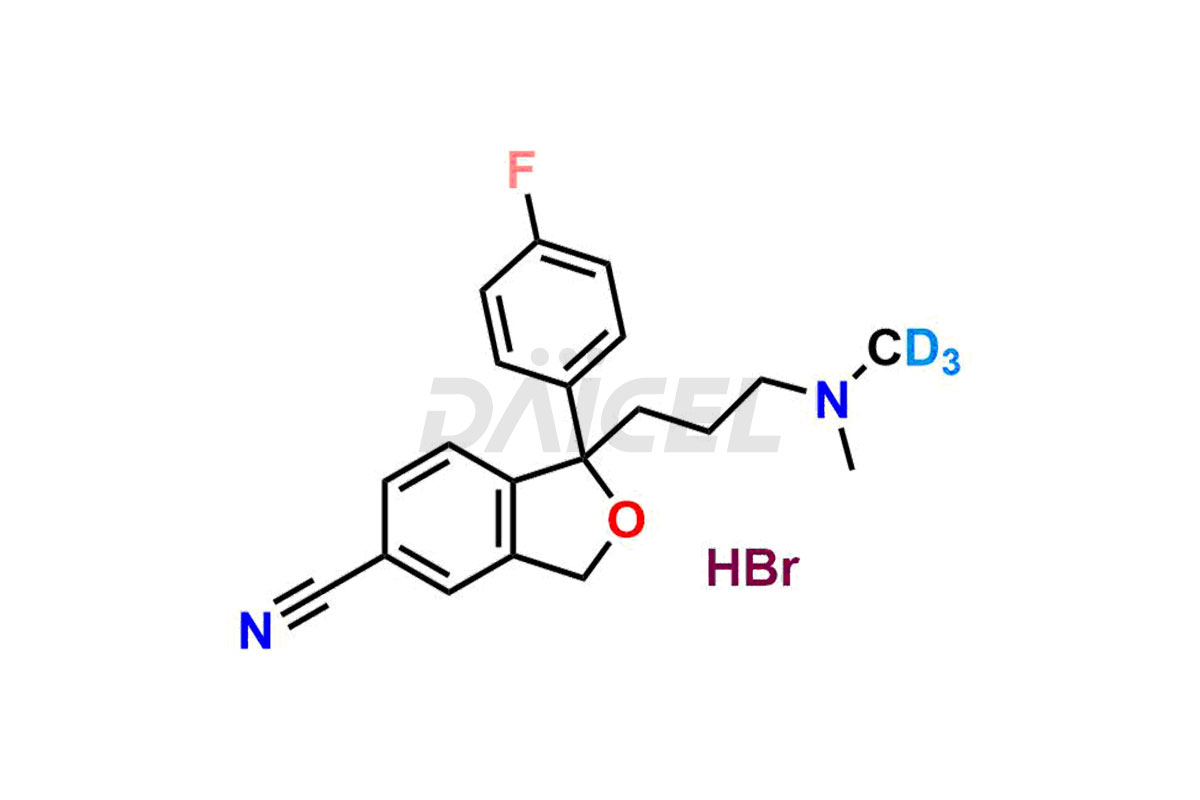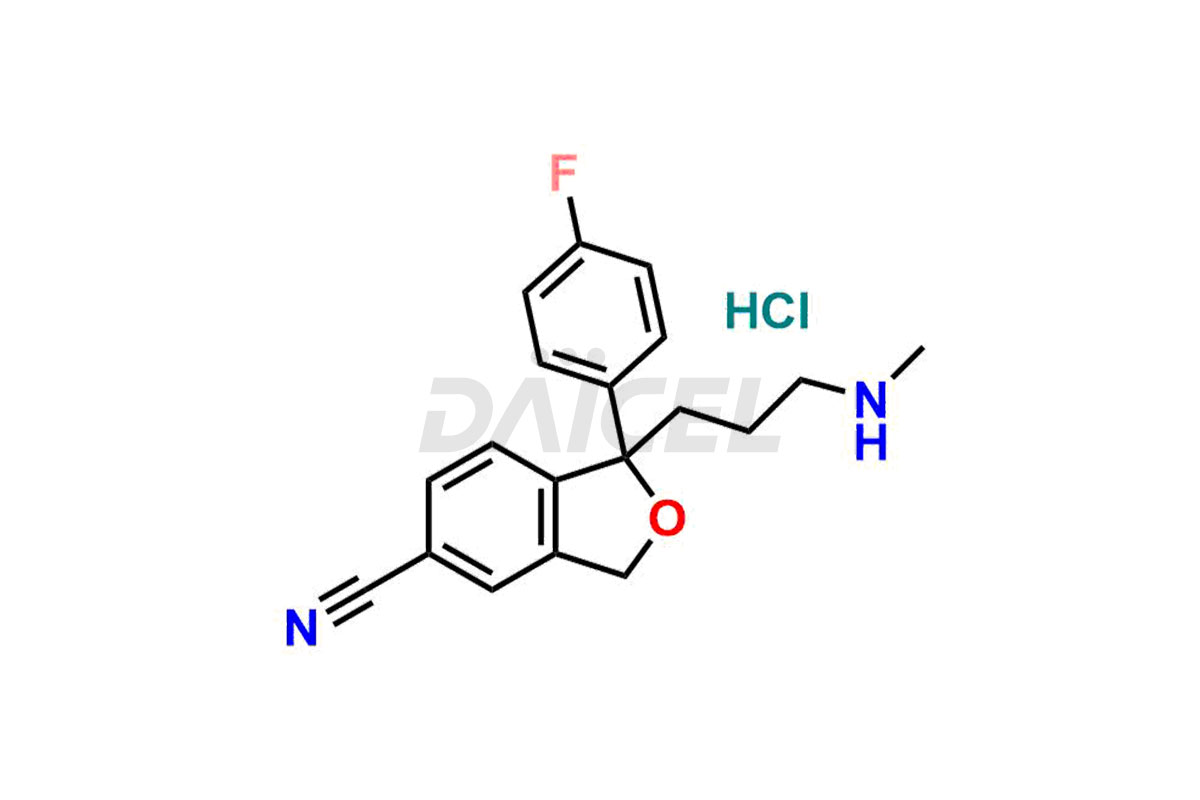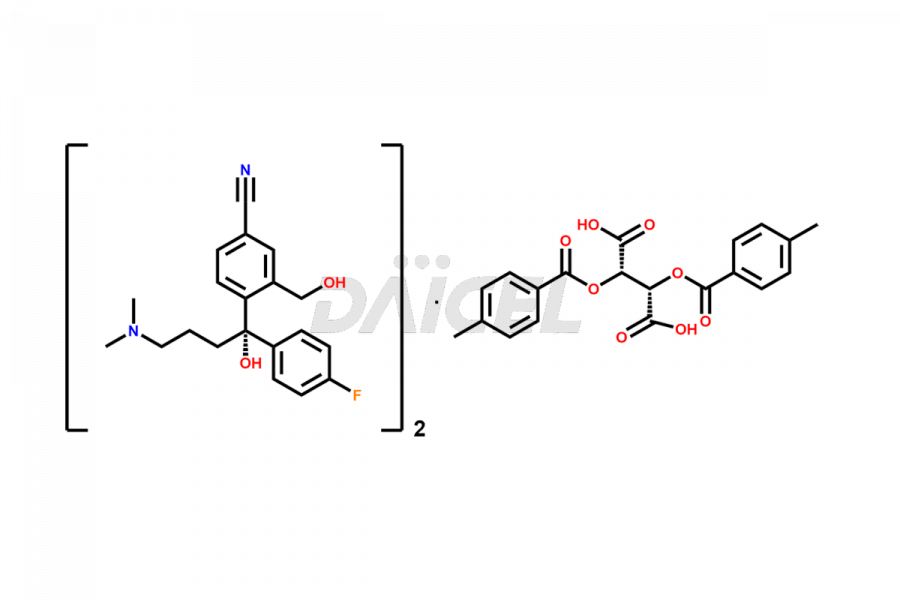Citalopram
General Information
Citalopram Impurities and Citalopram
Daicel Pharma synthesizes Citalopram impurities of exceptional quality, such as 4-(4-fluorobenzoyl)-3-(hydroxymethyl)benzonitrile, Desmethyl Citalopram hydrochloride and Escitalopram oxalate Related Compound-A. These impurities are crucial to assess the purity, reliability, and safety of Citalopram, an active pharmaceutical ingredient. Besides, Daicel Pharma provides a custom synthesis of Citalopram impurities to meet clients’ demands for delivery worldwide.
Citalopram [CAS: 59729-33-8] is a selective serotonin reuptake inhibitor (SSRI) of the bicyclic phthalene derivative. It possesses antidepressant and anxiolytic properties and alleviates the symptoms associated with depression.
Citalopram: Use and Commercial Availability
Citalopram hydrobromide is a selective serotonin reuptake inhibitor (SSRI) that has received FDA approval primarily for treating depression in adults. Various brand names for drug formulations containing Citalopram include Celexa and Citalopram Hydrobromide.
Citalopram Structure and Mechanism of Action 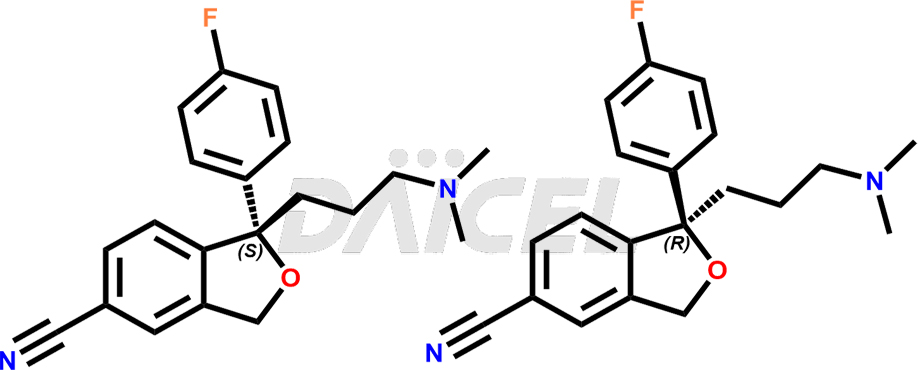
The chemical name of Citalopram is 1-[3-(Dimethylamino)propyl]-1-(4-fluorophenyl)-1,3-dihydro-5-isobenzofurancarbonitrile. Its chemical formula is C20H21FN2O, and its molecular weight is approximately 324.4 g/mol.
Citalopram inhibits CNS neuronal reuptake of serotonin (5-HT) and acts as an antidepressant.
Citalopram Impurities and Synthesis
During the synthesis1, storage, or degradation of Citalopram, impurities can form. These impurities may arise from starting materials, intermediates, or side reactions. It is crucial to analyze and control these impurities in Citalopram to ensure its safety, efficacy, and overall quality. By effectively controlling impurities, the purity and stability of Citalopram can be maintained, ensuring its therapeutic effectiveness and minimizing potential risks for patients.
Daicel Pharma offers a Certificate of Analysis (CoA) for Citalopram impurity standards, such as 4-(4-fluorobenzoyl)-3-(hydroxymethyl)benzonitrile, Desmethyl Citalopram hydrochloride and Escitalopram oxalate Related Compound-A, generated from an analytical facility compliant with cGMP standards. The CoA includes a comprehensive characterization report comprising data from techniques like 1H NMR, 13C NMR, IR, MASS, and HPLC purity2. Furthermore, on request, we give additional data like 13C-DEPT and CHN. Daicel Pharma can create unknown Citalopram impurities or degradation products and labeled compounds to assess the effectiveness of generic Citalopram. We also offer Citalopram Hydrobromide-D3, a deuterium-labeled Citalopram standard useful in bio-analytical research, such as BA/BE studies. A complete characterization report accompanies every delivery.
References
FAQ's
References
- Boegesoe, Klaus Peter; Toft, Anders Stausboell, Anti-depressive substituted 1-dimethylaminopropyl-1-phenyl phthalans, Kefalas A/S, Denmark, US4136193A, January 23, 1979
- Overoe, Kerstin Fredricson, Fluorescence assay of citalopram and its metabolites in plasma by scanning densitometry of thin-layer chromatograms, Journal of Chromatography, Biomedical Applications, Volume: 224, Issue: 3, Pages: 526-31, 1981
Frequently Asked Questions
What are the regulatory requirements for Citalopram impurities?
Regulatory requirements for impurities in Citalopram are described in various pharmacopeias and regulatory guidelines such as ICH and USP.
What are the types of Citalopram impurities?
The types of impurities in Citalopram include related substances, residual solvents, and inorganic impurities.
Which solvent helps in the analysis of Citalopram impurities?
Acetonitrile or Methanol are the solvents used in analyzing many impurities in Citalopram.
What are the temperature conditions required to store Citalopram impurities?
Citalopram impurities are stored at a controlled room temperature between 2-8 °C or as indicated on the Certificate of Analysis (CoA).
Note: Products protected by valid patents by a manufacturer are not offered for sale in countries having patent protection. The sale of such products constitutes a patent infringement, and its liability is at the buyer's risk.

